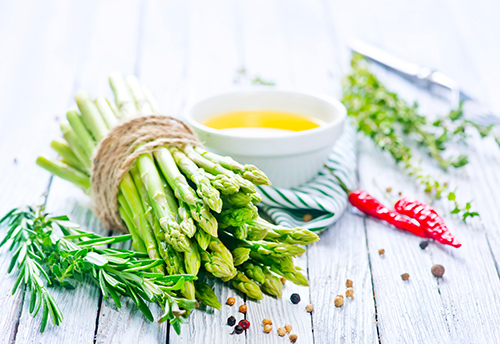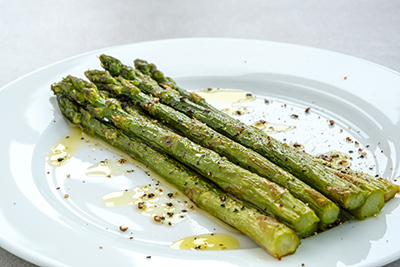Contents
One of the main health benefits of asparagus is that of a kidney stimulator. Anyone who has eaten even a small amount of asparagus has noticed that the urine has a unique odor after a few minutes. This is due to asparagine, the active substance in asparagus that forms part of its volatile essential oil. It is eliminated with the urine, increasing its volume.

Asparagus Scientific Facts
- Scientific name: Asparagus officinalis L.
- Other names: Asparagus fern, green asparagus, white asparagus, special bean.
- French: Asperge.
- Spanish: Espárrago.
- German: Spargel.
- Description: Tender stalks and buds of the asparagus bed, an herbaceous plant of the botanical family Liliaceae that reaches a height of 1.5 meters. The stalks are covered with tiny scalelike leaves.
- Environment: Originally from central and southern Europe, today, it is grown in every country with a temperate climate. The primary producing countries are Germany, France, and Italy.
Health Benefits of Asparagus

From a nutritional standpoint, asparagus is one of the lowest calorie foods available: only 23 kcal/100 grams. This is due to its viral lack of fat and shallow carbohydrate content. However, it is among the vegetables highest in proteins: 2.28 percent, an amount close to that of spinach (2.86 percent). It contains considerable fiber (2.1 percent), B group vitamins, folates, and vitamins A (provitamin), C, and E. In terms of minerals, it provides significant amounts of potassium, magnesium, iron, phosphorous, and various trace elements.
Taken together, this food is exceptionally rich in nutrients but low in calories. Asparagus is beneficial for the following conditions:
KIDNEY DISORDERS: Asparagus is a good diuretic that stimulates kidney urine production. It aids in eliminating fluids retained in the tissues. Because of its significant stimulant effect on the kidneys, those suffering from nephritis (inflammation) should consume asparagus in moderation.
OBESITY: Because of its shallow caloric content.

ECZEMA of the skin because of its depurant and detoxifying effect.
CONSTIPATION, because of its dietary fiber content.
How to Use and Prepare Asparagus
- COOKED: Asparagus is typically cooked for five to ten minutes. It may also be fried or roasted. If the stalk is particularly tough, it should be peeled.
- CANNED: Canned asparagus loses part of its vitamin and fiber (hemicellulose) but retains its minerals and diuretic substances.
DISCLAIMER: All content on this website is presented solely for educational and informational objectives. Do not rely on the information provided as a replacement for advice, diagnosis, or treatment from a qualified medical expert. If you are pregnant, nursing, or have any preexisting medical concerns, talk to your doctor before using any herbal or natural medicines.
REFERENCES
- George D. Pamplona-Roger, M.D. “Encyclopedia of Foods and Their Healing Power.” George D. Pamplona-Roger, M.D. Encyclopedia of Foods and Their Healing Power. Trans. Annette Melgosa. Vol. 2. Chai Wan: Editorial Safeliz, 2005. 250. Print.[health benefits of asparagus]
- Healthline: https://www.healthline.com/nutrition/asparagus-benefits
- Science Direct: Anthocyanins: https://www.sciencedirect.com/topics/biochemistry-genetics-and-molecular-biology/anthocyanin
- National Institutes of Health: https://www.cancer.gov/types/prostate
